
Hammerland HQ 129X
Vintage 1946
I obtained this receiver for my collection simply because it was the same model that I first used when I got my Ham Radio License, which at the time was WNØMDM.

I made a lot of CW contacts with this radio receiver and a simple home built transmitter. As I mentioned in my Ham Story I purchased my original on a time payment plan in 1952, which was a second hand one at that time.
The band spread is electrical with the right hand dial calibrated with the ham band frequencies. This was an excellent receiver for that day in the lower priced category.
Anyone who has been involved in the Ham Radio hobby most certainly has heard about the receivers made by Halicrafters. They built a very solid machine that produced great results for the casual listener to the experienced ham. I'm not a Halicrafters nut, but I do have a respectable collection of their equipment and have had good luck restoring others for friends.
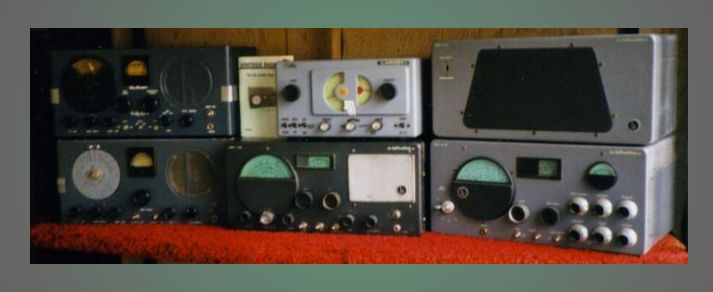
Model S 20 R Sky Champion
Vintage 1939/40 (top left)
This is a 9-tube set with electrical band spread. There is no built in tuning meter just a socket on the rear apron for one. This was a fairly stable radio for its day. It is AC powered with a transformer in the power supply.
Model S 20 Sky Champion
Vintage 1942 (bottom left)
This is similar to the S20 R but produced for a lower price. It did not have electrical band spread tuning. The band spread was strictly mechanical. This rig came to be modified by adding another stage of IF amplification to it and I have no idea why this was done. This and the Model S 40 A were rescued from a junk pile left by a friend who passed away. The cabinet back and top were missing so I fabricated a substitute.
Model S 38
Vintage 1947/48 (top center and below)
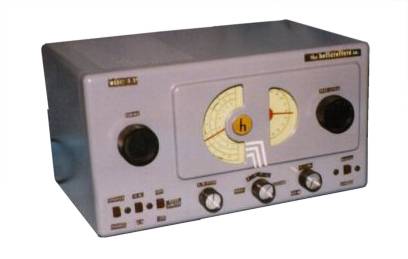
This was a very low cost receiver. I believe the price was $29.95. It is an AC/DC style chassis with 5 tubes. The band spread is mechanical. It does not have a conventional BFO circuit. The IF stage is made to regenerate so that a CW signal can be copied.
This set was very badly modified when I obtained it; the left side of the cabinet was drilled with large holes for big toggle switches and I was forced to patch them with some auto body putty. The cabinet had to be repainted and not wishing to loose all the decals I masked them over before painting that is the reason for the letters to be on a different color background.
Model S 40 A
Vintage 1949 (bottom center)
As mentioned above this radio came from a junk pile and had been left in the rain and were all covered with mud. This on also did not have the original cabinet back, I had one from another Halicrafters that was not worthy of restoration so the front and back colors are not a good match.
Model SX 43
Vintage 1949/50 (bottom right with matching speaker top right)
This radio was considered one of their deluxe models for that era. It had the Six-meter band and also the FM Broadcast band on it as well. Its band spread was electrical also. This band-spread knob was the main tuning for the six-meter and the FM band.
This radio has several other deluxe features. It has a crystal filter in the IF and also broad and narrow coil filters. Atone switch is also on the front panel for high and low tone. The function switch has a phono position and a jack is on the back to plug in an external phono turntable. The speaker output impedance is 500 ohm for the matching speaker setting on top. I might comment that the stability of the six meter band and the FM band is typical of the tube era of that time, it drifts for some time when warming up.
Model HT-18
Vintage 1948/1949 (not in group picture)
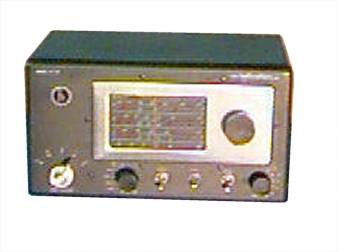
This is a low power (4 watts) VFO Exciter for ham bands from 3.5 MHz to 30 MHz that was used to power an amplifier. It also had a modulator built in for AM or FM. It has a 6L6 tube in the final. The price originally was $110.00 This came to me in fair condition. It did need a good cleaning and general tune up. I have never seen one of these before nor talked to any one that has used one so it made an interesting project.
Model S41G
Vintage 1945 (not in group picture)
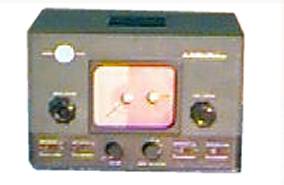
My collection also includes this receiver which is an older version than the S38 and the S38 B. don't let the higher model number fool you into thinking this a newer model than the S38 series.
When I obtained this rig from a Ham flea market it did work but the cabinet was not too bad with the exception of needing a good scrubbing. The top mounted speakers always caught all the things that speakers did not like so I needed to replace it along with some of the tubes and of course some of the capacitors. It did align well but the performance still was not as good as the S38 series.
It is a 6 tube set with 3 bands from Broadcast to 30 MHz. The original price in 1945 was $33.50.The G in the model number indicates it was the gray cabinet.
Model S120
Vintage 1961-1964 (not in group picture)
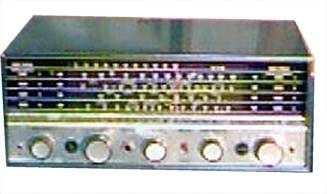
This receiver had been in the hands of an inexperienced person who had tried to repair it. The original equipment built in antenna was missing but had been replaced with a homebuilt antenna. The way it was constructed it just could not have worked. This antenna was just for the broadcast band, which leads me to believe that perhaps the previous owner used it just for short wave reception.
It has 4 tubes of the miniature style such as 12BA6, BE6. AV6, and 50C5. The rectifier was of the selenium type. This model was the replacement for the S38 series. The price new was 69.95.
Click here to return to my Restoration Page or here to return to my Home Page
If you want more information please send me e-mail.